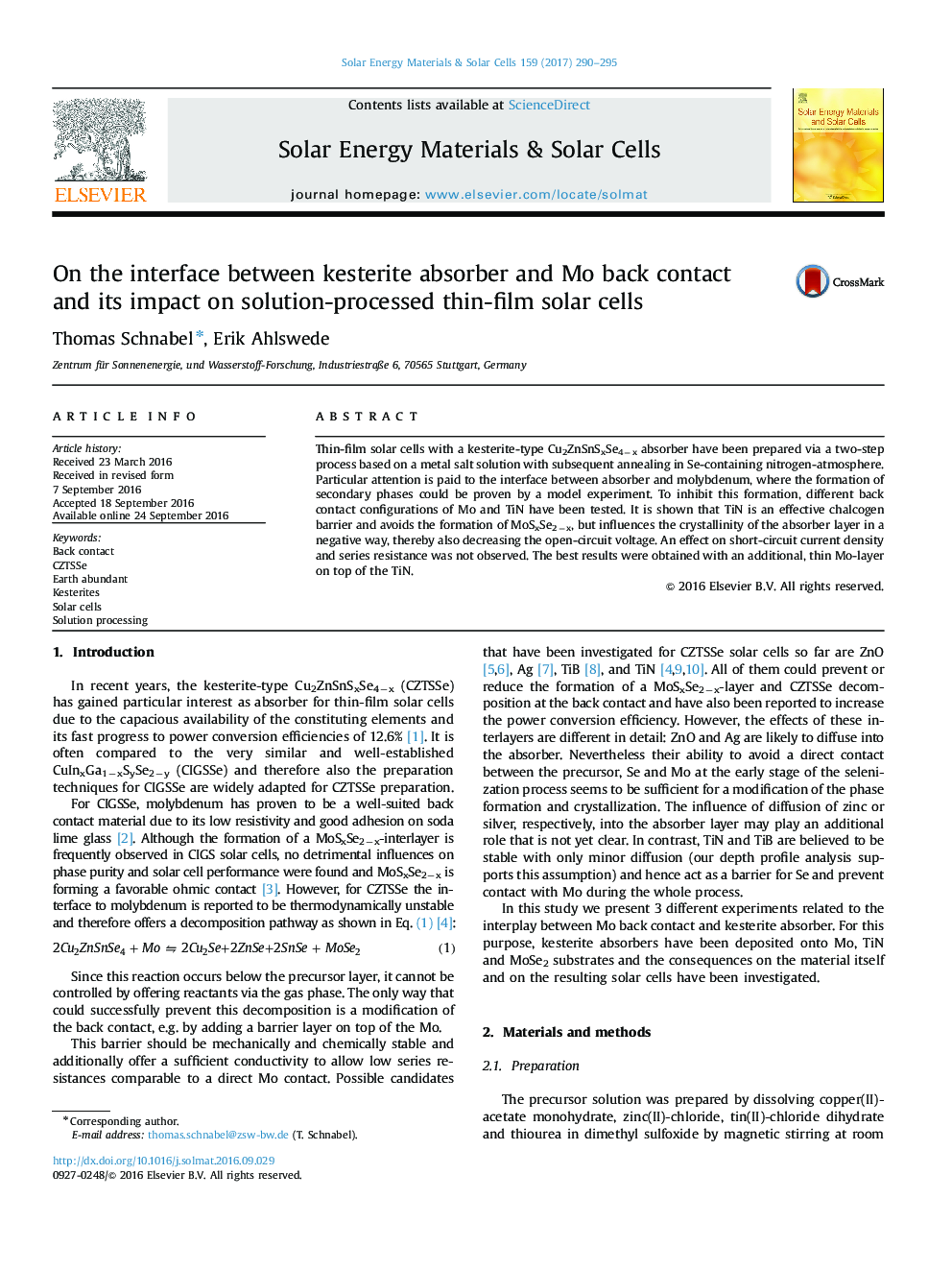| Article ID | Journal | Published Year | Pages | File Type |
|---|---|---|---|---|
| 6457504 | Solar Energy Materials and Solar Cells | 2017 | 6 Pages |
â¢The interface between Cu2ZnSnSxSe4âx and molybdenum has been investigated in a detailed model experiment.â¢The applied TiN layer works as chalcogen barrier but influences morphology and solar cell parameters in a negative way.â¢Pre-selenized molybdenum as back contact can improve the efficiency.â¢A novel back contact stack offers a controllable MoSxSe2âx thickness, higher efficiency and reduced variation of the solar cell parameters.
Thin-film solar cells with a kesterite-type Cu2ZnSnSxSe4âx absorber have been prepared via a two-step process based on a metal salt solution with subsequent annealing in Se-containing nitrogen-atmosphere. Particular attention is paid to the interface between absorber and molybdenum, where the formation of secondary phases could be proven by a model experiment. To inhibit this formation, different back contact configurations of Mo and TiN have been tested. It is shown that TiN is an effective chalcogen barrier and avoids the formation of MoSxSe2âx, but influences the crystallinity of the absorber layer in a negative way, thereby also decreasing the open-circuit voltage. An effect on short-circuit current density and series resistance was not observed. The best results were obtained with an additional, thin Mo-layer on top of the TiN.
